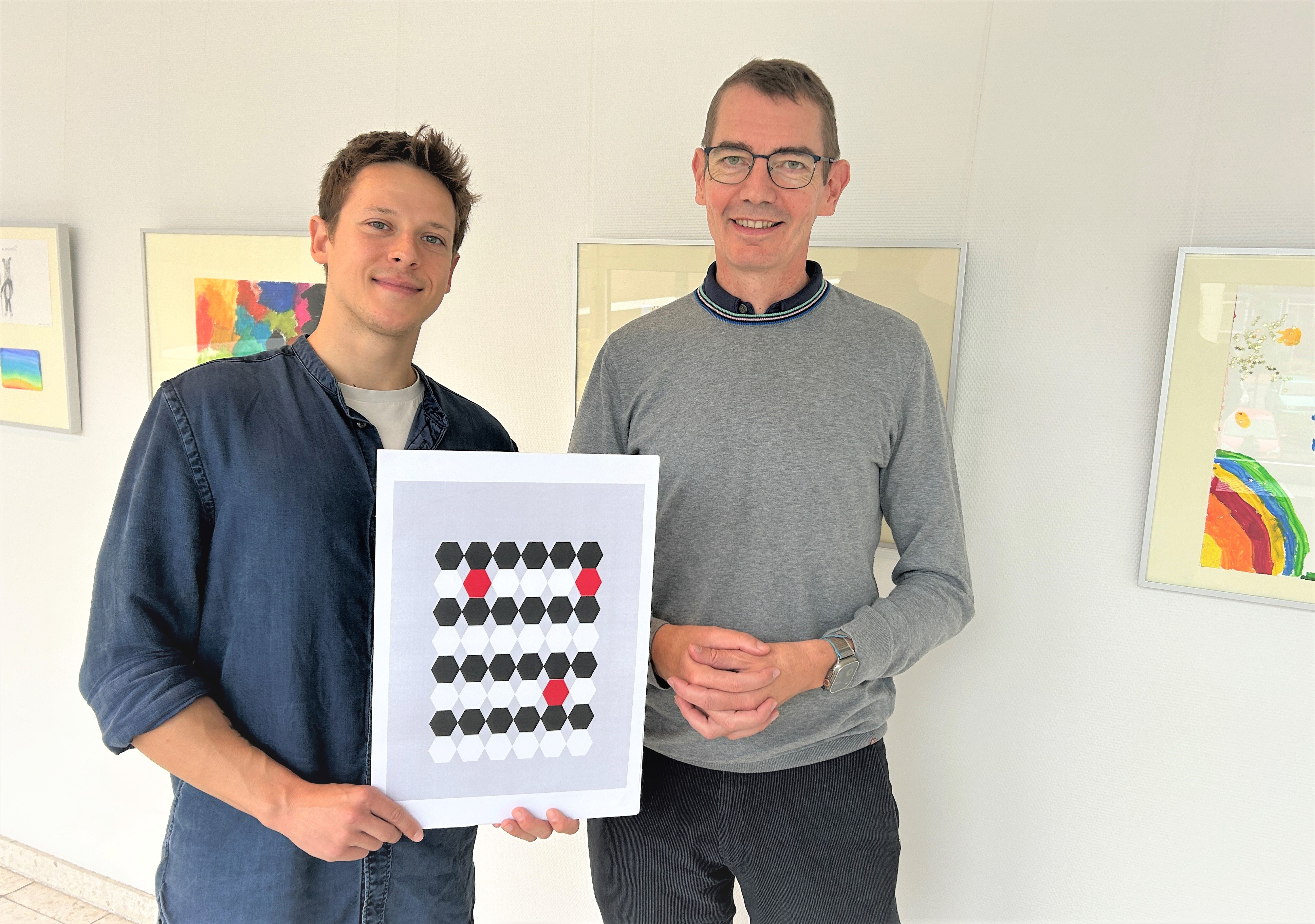First study to date to investigate the risk of cancer in mosaic RASopathies due to disease-causing variants in the HRAS or KRAS genes shows the importance of close cancer surveillance.

The researchers Professor Dr. Christian Kratz and Jonas Windrich have analysed the risk of cancer in patients with multi-organ mosaic RASopathies. Copyright: Jana Illmer/MHH.
Hereditary changes in genes are often the cause of rare diseases. For example, disease-causing gene variants (PVs) in the HRAS gene cause Costello syndrome and PVs in the KRAS gene cause Noonan syndrome and cardio-facio-cutaneous syndrome. If such PVs arise only during embryonic development, the affected individual can present with mosaic disorder, characterized by both altered and healthy cells. Researchers at Hannover Medical School (MHH) and the National Cancer Institute (NCI) in the USA have analysed the cancer risk within a special group of young patients for the first time. The results clearly show how important close cancer surveillance is, as cancer was diagnosed in 20 per cent of those affected at the age of just 20. If only rhabdomyosarcoma is considered, the risk of developing was eight hundred times higher compared to the general population.
Special high-risk group
‘We were able to include a total of 69 cases in the study. We observed twelve cases of cancer, mainly in young children,’ explains Professor Dr Christian Kratz, Director of the Department of Paediatric Haematology and Oncology at the MHH and initiator of the study. Professor Kratz’s team included only patients with multi-lineage mosaic RASopathies in the study. RASopathies are a group of developmental disorders caused by dysregulation in genes of the RAS-MAPK signalling pathway. Analysed were PVs in the HRAS gene or KRAS gene.
“A special feature of mosaic RASopathies is that they are diseases that develop during embryonic development in the embryo. PVs can occur at any time during pregnancy. This is referred to as a mosaic, as not all cells carry the alteration,’ explains Gina Ney, a researcher at the NCI in the USA. In PVs that occur early during embryonic development, different tissues are affected by the mosaic RASopathy. They are called multilineage mosaic RASopathies in the study.
Genetic alterations as a driving force for cancer
The spectrum of PVs typically found in mosaic RASopathies overlaps with the spectrum of genetic mutations that occur in cancers. Rhabdomyosarcomas were diagnosed in seven patients. Those affected were between one and 48 months old, and in one case a second rhabdomyosarcoma was diagnosed at the age of twelve. ‘It is remarkable that all seven rhabdomyosarcomas occurred in the urogenital region. This is an important finding that is particularly relevant for the clinical care of those affected,’ says Jonas Windrich, medical student at the MHH, who was involved in the study as co-first author. Three cases of skin cancer, one Wilms tumour and one case of bladder cancer were also observed.
Close cancer monitoring required
The highest risk of cancer was observed in the first years of life. ‘There is a need for rigorous cancer surveillance, especially rhabdomyosarcoma in young children. In adults with this high-risk disease, regular skin cancer surveillance is necessary,’ emphasises Stewart, a researcher at the NCI in the USA.
You can find the original paper here.
Text: Jana Illmer-Krüger